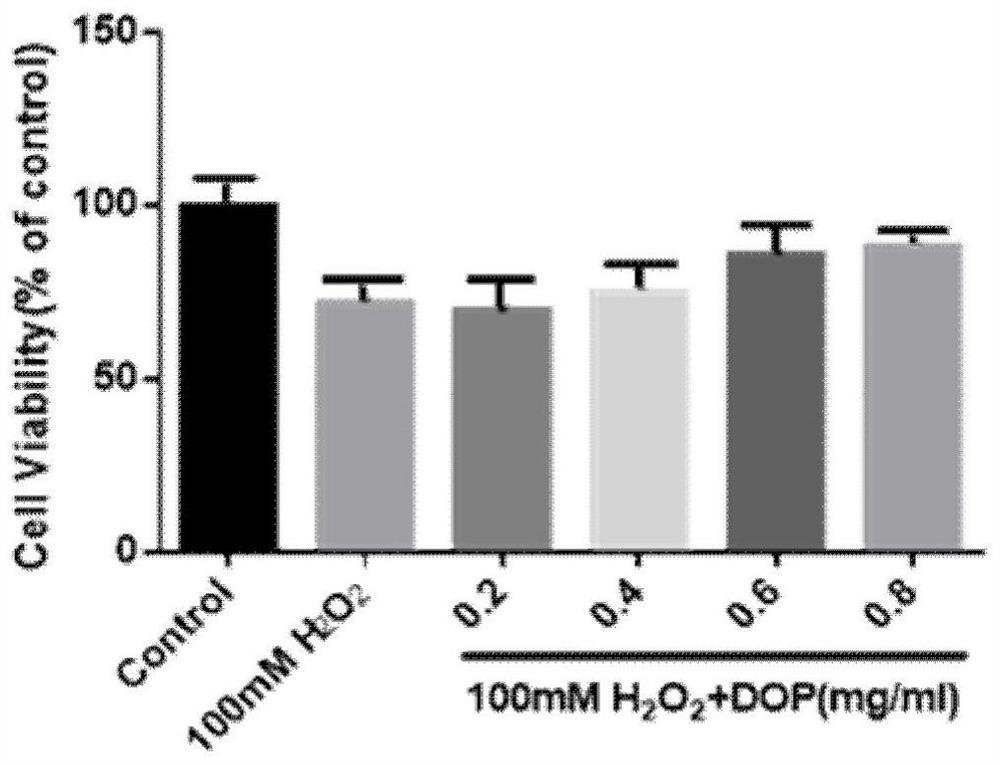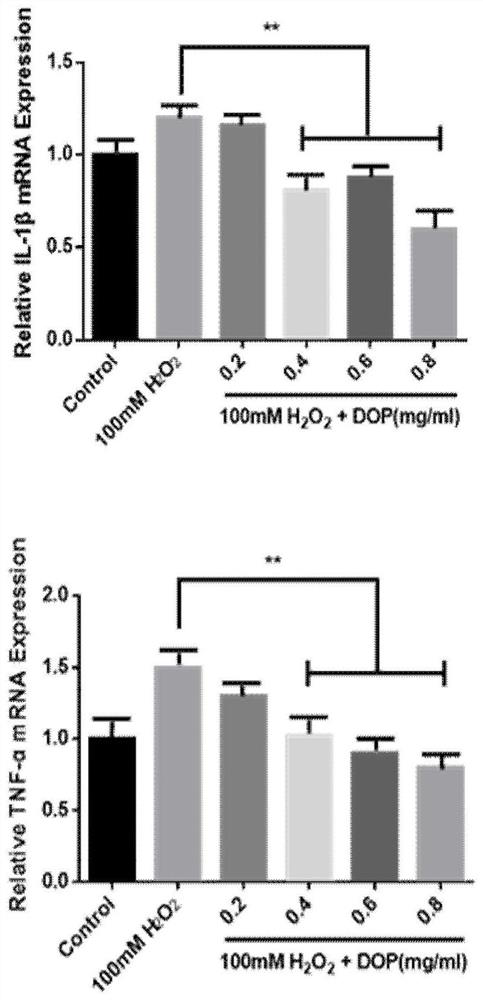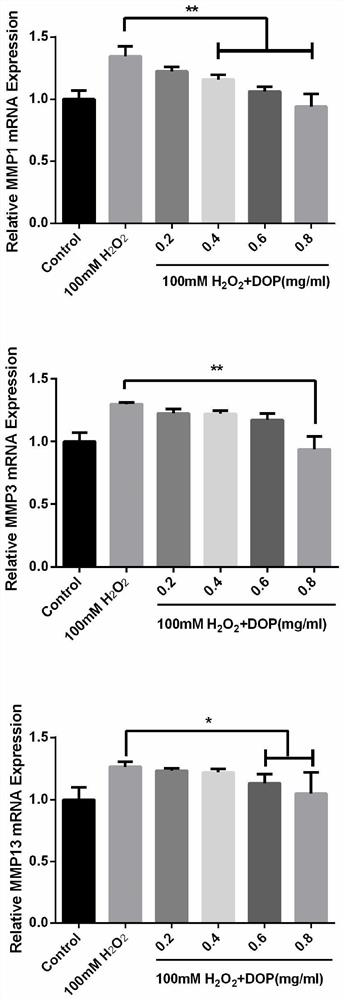Application of dendrobium officinale polysaccharide in preparation of medicine for treating osteoarthritis
A Dendrobium officinale polysaccharide and osteoarthritis technology, applied in the field of medicine, can solve the problems of high price of small molecule inhibitors, pending research on biological safety, irreversible osteoarthritis, etc., to protect the extracellular matrix of cartilage, relieve damage, The effect of alleviating cartilage degeneration
- Summary
- Abstract
- Description
- Claims
- Application Information
AI Technical Summary
Problems solved by technology
Method used
Image
Examples
Embodiment 1
[0030] Dendrobium officinale polysaccharide extraction
[0031] Bioactive ingredients Dendrobium officinale polysaccharide, extracted from Dendrobium officinale. Remove the leaves of Dendrobium officinale and take the stems, dry in an oven at 80°C, grind into powder, accurately weigh 1.00g dry product coarse powder, wrap it with filter paper and degreasing gauze, and use petroleum ether (60-90°C) in a Soxhlet extractor Reflux and degrease in a water bath at 85°C for 1.5h, then reflux with 80% ethanol in a water bath at 95°C for 3h, take out the filter paper bag and dry it in a 60°C oven, then wash the sample in the filter paper into a 150ml round bottom flask with a narrow bottle, add 100ml Deionized water, extraction in boiling water twice, 3h / time, filter while hot, collect the filtrate, concentrate under reduced pressure on a rotary evaporator to 50ml, add a small amount of activated carbon for decolorization, filter, add 4 times the volume of the filtrate to mix with 95% e...
Embodiment 2
[0033] Dendrobium officinale polysaccharide preparation preparation:
[0034] Take by weighing 0.68g Dendrobium officinale polysaccharide, 2g citric acid and 0.8g sodium benzoate and mix, the mixture is dissolved in 100ml water for injection, water for injection is physiological saline, also can be replaced with phosphate buffer saline PBS (pH7.2), stir and mix Homogenize, filter impurities, and dispense into ampoules under sterile conditions.
Embodiment 3
[0036] Establishment of mouse medial meniscal instability (DMM) model:
[0037] Eight-week-old C57L / B6 mice were used for the experiment. After intraperitoneal anesthesia with chloral hydrate, the skin was routinely prepared to disinfect the knee joint. The right parapatella medial incision was taken to expose the knee joint, the joint capsule was cut, the joint cavity was opened, and the patella was dislocated laterally. , flex the knee joint as far as possible, expose the anterior cruciate ligament, cut the medial meniscus with a sharp knife under direct vision, remove the medial meniscus as much as possible, do not damage the cartilage surface during the operation, completely stop bleeding, reset the patella, and suture the incision layer by layer. The sham operation group was used as the control group, without any fixation measures after the operation, intramuscular injection of penicillin every day for 3 consecutive days. After 3 days, it was observed whether the knee joi...
PUM
 Login to View More
Login to View More Abstract
Description
Claims
Application Information
 Login to View More
Login to View More - R&D
- Intellectual Property
- Life Sciences
- Materials
- Tech Scout
- Unparalleled Data Quality
- Higher Quality Content
- 60% Fewer Hallucinations
Browse by: Latest US Patents, China's latest patents, Technical Efficacy Thesaurus, Application Domain, Technology Topic, Popular Technical Reports.
© 2025 PatSnap. All rights reserved.Legal|Privacy policy|Modern Slavery Act Transparency Statement|Sitemap|About US| Contact US: help@patsnap.com



